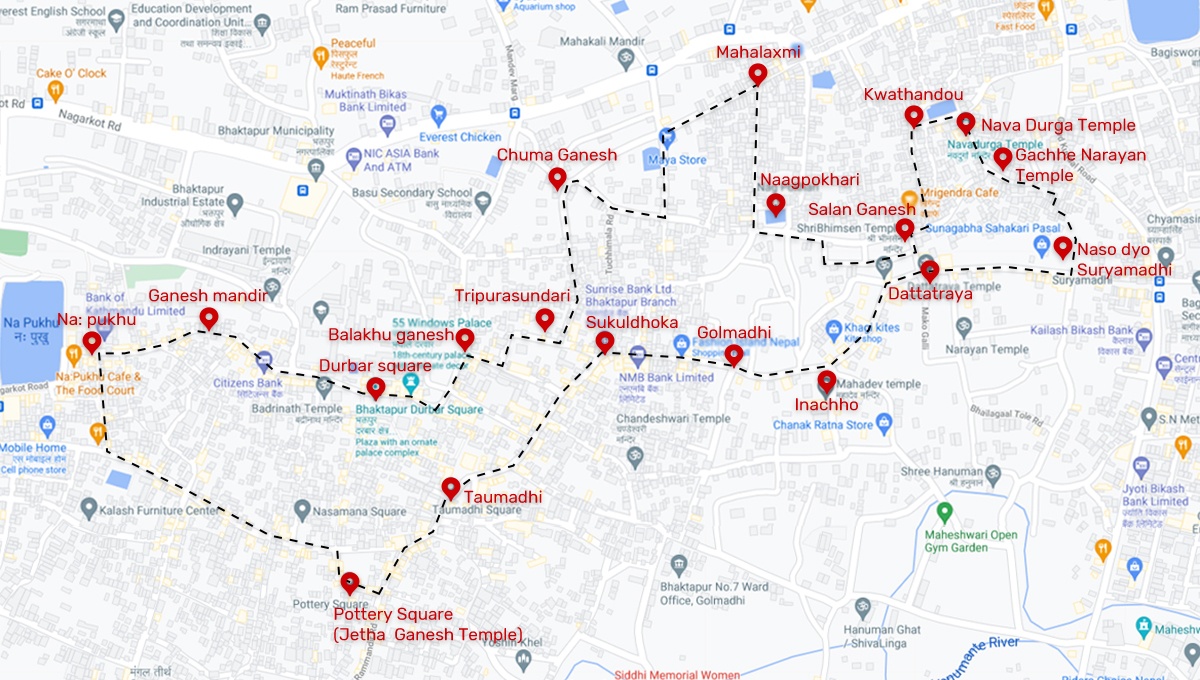Circumambulation is an important ritual giving cosmic qualities to a religious entity in the world. In this light, the festival of circumambulating the town also defines the boundary of the sacred town. Although the routes do get extended over time to newer quarters still they are generally representative of the town form. The routes always enclose the Dyochhens of the Astamatrikas, although pithas are out of town physically.
In the case of Bhaktapur, these may indicate political historical boundaries of different times too. The Pradakshina Path of the major religious sites following the Bisket festival, like the circumambulation by the Navadurga, leaves out the southern section. The main trading route again forms the boundary.
The general procession way
In Hinduism, the Pradakshina is a procession in which certain places are visited in a fixed order in order to connect the spatially separated places through the ritual. The Hindu processions in Bhaktapur follow a fixed route, the shape and sequence of which allows indications of the topographical urban development. The processions move clockwise through the city, with the main street being walked in an east-west direction first, followed by Durbar Square and the northern districts to Dattatreya Square. All ritually independent tols are crossed (cf. city structure ). The ring-shaped processions through the entire city only take place at the beginning of the New Year (Bisket) and on Remembrance Day (Gai Jatra).
Places that are encountered during Gai jatra (Pradakshina Patha) are as follow:
- Chuma Ganesh
- Mahalaxmi
- Naagpokhari
- Salan Ganesh
- Kwathandou
- Nava Durga temple
- Gachhe Narayan temple
- Naso dyo- Suryamadhi
- Dattatraya Square
- Inachho
- Golmadhi
- Sukuldhoka
- Taumadhi square
- Pottery Square– Jetha Ganesh temple
- Nasamana-ganesh mandir (Bamsagopal)
- Na: pukhu
- Ganesh mandir
- Bhaktapur Durbar square
- Balakhu ganesh
- Tripurasundari
- Back to chuma ganesh.
Copied and merged from different books.

